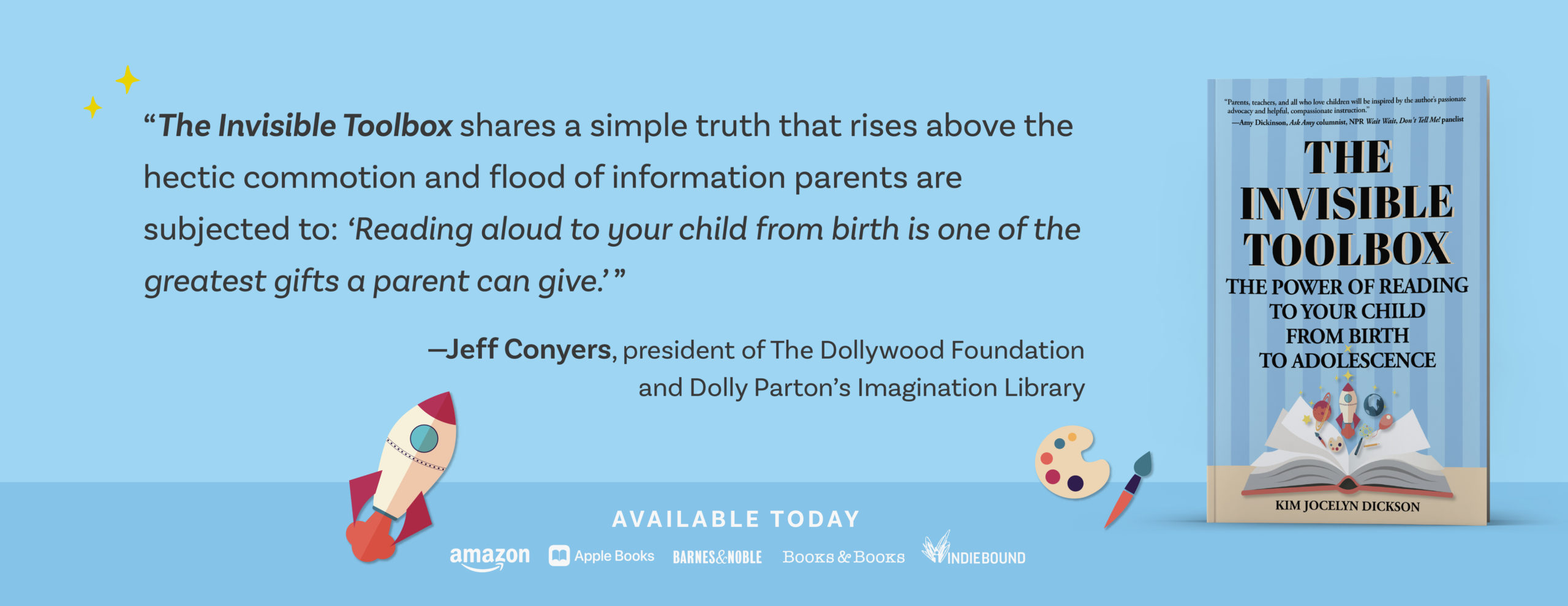
Excerpt from the Introduction to The Invisible Toolbox: The Power of Reading to Your Child from Birth to Adolescence…
“Dear New Parent,
Congratulations! Your precious little one is here. There is no feeling in the world more wonderful than holding your tiny newborn for the first time. Your heart expands with warmth and love and protection in a way you never could have imagined until now. As you begin a journey with this miraculous new life you have created that will take both of you far into the future, into places known and unknown, you will do everything in your power to ensure your baby’s path is as full of hope and promise as it can be.
As well-meaning parents, we all want our children to thrive. Regular pediatrician visits, vaccinations, sleep routines, proper nutrition, feeding, bathing, cuddling—we do all of these things because we want what is best for them. But there is one more thing that is essential, and it’s one that is as important to our growing child as all the things we do to take care of our baby’s physical needs. This necessary thing is one that you may already know—or perhaps may have forgotten or haven’t fully understood. As someone who has been in your shoes as a parent and taught children just like yours in elementary school for decades, I’d like to share with you what I’ve learned about this essential thing over the years.
Flash forward five years, and imagine with me what your child will look like on their first day of kindergarten. At this moment, that day may seem a long way off, but believe me, it will be here before you know it. Can you see your child in the brand-new school clothes that you’ve bought for this special day, down to the sneakers with laces so white because they too have never been worn? Under a fresh haircut there may be a big grin or perhaps a look of apprehension. Your child knows it’s a big day, just as you do. On their back is a crisp new backpack and in one hand a lunchbox filled with favorite things. All of this equipment is recently acquired, full of promise and expectation for the future–and probably decorated with a favorite superhero or three. Who will that be, you wonder? The picture is almost, but not quite, complete. There is more. And here is the secret.
In your little child’s other hand they carry something else. It’s a toolbox, but it’s invisible. Unseen though it is, it will be carried to school on the first day of kindergarten and every day after that all through your child’s academic career. Whether or not it contains the most essential tools will have an enormous impact on those years and far into the future…”



 As much as we’d like to believe that children arrive at school on the first day of kindergarten with comparable reservoirs of potential, the sad reality is this simply isn’t true. From the very beginning of their school lives, the playing field is not even. Children arrive in wide-ranging states of readiness to learn, predetermined by their early language experiences.
As much as we’d like to believe that children arrive at school on the first day of kindergarten with comparable reservoirs of potential, the sad reality is this simply isn’t true. From the very beginning of their school lives, the playing field is not even. Children arrive in wide-ranging states of readiness to learn, predetermined by their early language experiences.
 The benefits a child gains from being read aloud to are many, and they contribute directly to success in school.
The benefits a child gains from being read aloud to are many, and they contribute directly to success in school.
 As the chasm between rich and poor continues to grow and the middle class shrinks in the United States, we look to education as the primary tool for rectifying inequity across the socio-economic classes and leveling the economic playing field. Politicians stump for education reform and pass legislation. Head Start. No Child Left Behind. Common Core. Teachers are held responsible for student achievement and often vilified and scapegoated by the media when test scores don’t improve. Cyclically, educational reform swings like a pendulum between the poles of ‘meeting children where they are’ and ‘raising the bar’. The conversation is ongoing and shifts nearly every decade but there is one constant, and that is the absence of discussion about what happens before a child arrives at school.
As the chasm between rich and poor continues to grow and the middle class shrinks in the United States, we look to education as the primary tool for rectifying inequity across the socio-economic classes and leveling the economic playing field. Politicians stump for education reform and pass legislation. Head Start. No Child Left Behind. Common Core. Teachers are held responsible for student achievement and often vilified and scapegoated by the media when test scores don’t improve. Cyclically, educational reform swings like a pendulum between the poles of ‘meeting children where they are’ and ‘raising the bar’. The conversation is ongoing and shifts nearly every decade but there is one constant, and that is the absence of discussion about what happens before a child arrives at school.